Commercial sunflower farming is very common and popular in many countries. It is cultivated mostly in temperate regions and some tropical regions as food crops for humans, cattle and poultry, and also as ornamental plants.
Sunflowers generally grow during the summer and into early fall, with the peak growth season being mid-summer. Several species of Sunflower are grown in gardens, but have a tendency to spread rapidly and can become aggressive.
Sunflowers were originated in the Americas. They were first domesticated in what is now Mexico and the Southern United States. Domestic sunflower seeds have been found in Mexico, dating to 2100 BCE.
Native Amercian people grew sunflowers as a crop from Mexico to Southern Canada. The first crop breeds were brought from America to Europe by explorers in the sixteenth Century.[1]
Sunflower is actually one of the most important oilseed crop in many temperate countries. And it is a major source of vegetable oil in the world.
Sunflower farming for oilseed is becoming popular in India, Bangladesh and some other Asian countries. It has gained popularity in India due to the national priority of vegetable oil production.
And currently, India is one of the largest producers of oilseed crop in the world. And oilseeds occupy a very important position in the Indian agricultural economy.
Sunflower oil is of good quality. And it is considered as a premium oil when compared to other vegetable oils. Consumer of Sunflower oil is increasing gradually throughout the world, mainly because of the health benefits of this oil. And sunflower oil is among the largest selling oil in the branded oil segment.
However, commercial sunflower farming can be a great business idea for you, especially if you want to make some good profits. It is an established business idea and you can start it easily.
What Are The Advantages of Sunflower Farming Business?
Commercial sunflower farming business is very easy and simple, and has many advantages or benefits. Sunflower is a very important oilseed crop of some countries.
So you can make good profits from commercial sunflower cultivation business. Here we are shortly describing about the top advantages of sunflower farming business.
- Commercial sunflower farming is not a new business idea. Many people are doing this business already.
- So, you don’t have to worry much about it. And you can start this business for making good profits.
- Demand and price of both sunflower seeds and oil are good in the domestic and international market.
- Sunflower plants generally grow almost everywhere around the world with temperate conditions. So, you can start growing sunflowers if you live in the temperate climates.
- If you are an unemployed educated person, then starting this business can be a good income and employment source for you.
- Generally, production costs in sunflower farming business are less, and the ROI is good.
- Marketing both seeds and oil is very easy. Because both seeds and oil already have very good demand and value in the market. You will probably be able to easily sell your products in the market.
- Consuming sunflower seeds and oil has many health benefits. And you can enjoy fresh seeds and oil if you grow sunflowers of your own.

How to Start Sunflower Farming Business?
Starting sunflower farming is very easy and simple. You can easily start and operate this business, even if you are a beginner. Sunflower plants generally grow well in temperate climates with exposure to full sun. They grow well in loamy, sandy soil.
Here we are trying to describe more about sunflower farming business and the steps from planting, caring to harvesting and marketing.
Step 1: Learn Practically
First of all, try to learn practically about this business from any existing farmers in your area. Having practical knowledge is very important in this business. So, learning practically will be very helpful for you.
Step 2: Complete a Training
Agribusiness training is available in some areas. So, you can complete a sunflower farming training if such facility is available in your area. Completing the training will help to learn many things practically about this business.
Step 3: Select a Good Location
You have to select a very good location for starting your sunflower farming business. The selected land must have to be well-drained and fertile with exposure to full sun.
The plants can be grown on a wide variety of soils, and the plants can tolerate a moderate pH range and some salinity. The plants thrive best on deep loam soils with good drainage and irrigation facilities. The optimum range of soil pH for the sunflower plants is 6.5 to 8.0.
Step 4: Prepare the Soil
For preparing fine seed bed, carry out two to three ploughing operation followed by planking. In Indian conditions, complete sowing seeds by January end for obtaining good yield. Use transplanting method for delay sowing (it should be done in February).
Use adequate amount of organic fertilizers while preparing the soil. Apply 4-5 ton of well decomposed cow dung per acre in soil, 2-3 weeks before sowing.
Overall apply N:P@ 24:12 kg/acre in form of Urea@50kg, SSP@75kg in soil. For accurate dose of fertilizer do soil testing and apply doses on basis of it. Apply half dose of nitrogen and full dose of P at time of sowing. Apply rest of nitrogen 30days after sowing. In case of irrigated crop, apply remaining half dose of Nitrogen in two equal splits, first 30days after sowing while remaining after 15 days.[4]

Step 5: Consider Climate Requirements
The sunflower plants can be cultivated on each type of soil throughout the year. But cool climatic conditions are required during the germination period and also during the growth of seedlings. The seedlings can tolerate frosts condition up to some extent till they bear 4 to 8 leaf during growth development.
But a hot atmosphere is needed in the time interval of the flowering stage from the seedling stage. And also hot temperature is also required till the maturity. High humidity along with rainfall and cloudy weather during flowering stage can cause lower seeding and hence less production.
Step 6: Know The Best Growing Time
In the American countries, plant between April and mid-July. In the south, this will probably occur in mid-March or early April. It’s best to sow the seeds directly into the soil after danger of spring frost has passed anytime after soils have warmed to 50°F.
But in Indian conditions, complete sowing the seeds by January end for obtaining good yield. And sowing should be done within February for delay crop. For Indian conditions, 20°C to 25°C temperature is ideal for showing sunflower seeds.
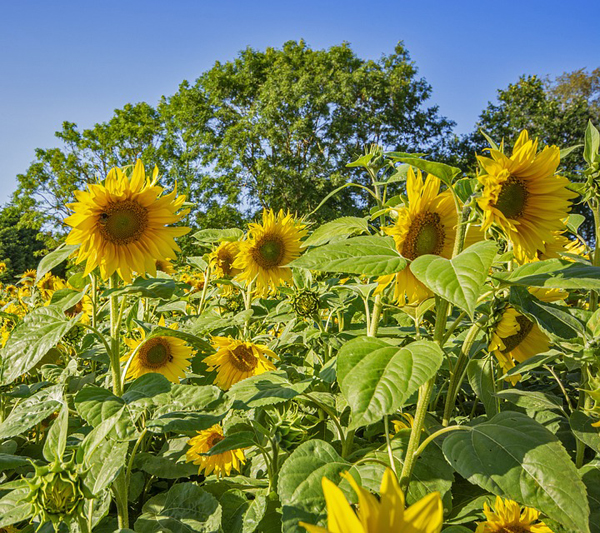
Step 7: Choose The Right Variety
There are many varieties of sunflowers are available throughout the world. Not all the varieties are good for growing in all parts of the world. Some varieties grow well in specific area and conditions.
The Mammoth, Autumn Beauty, Sunrich Gold and Teddy Bear are some common and popular sunflower varieties in the American countries.
Morden, GAUSUF-15, Morden TNAUSUF-7, CO-1, CO-2, Surya, SS-56, LS-11, DRSF 108, PAC 1091, PAC-47, PAC-36, Sungene-85 etc. are some common varieties in India.
And depending on the area, there are some other varieties available. Choose the right variety which grow well in your area. You can ask for help from an expert in your area.
Step 8: Purchase Seeds
The sunflower plants are grown from seeds. Sunflower is actually very common throughout the world. So, you will probably be able to easily purchase the seeds from your local seed supply stores.
Today, there are some companies available with online stores. So, you can also consider ordering online.
Seeds Per Acre: 2-3 kg per acre for direct sowing. And 2-2.5 kg per acre for the hybrid varieties.
Step 9: Planting
Plating the right way is very important for maximum growth of the plants and also for good production. Here we are describing all the steps for planting and sowing.
Seed Treatment
You must have to treat the seeds before sowing. Before sowing for quick germination, soak the seeds in water for 24 hour and shade dry. Then treat the seeds with Thiram at the rate of 2 grams per kg of seeds. It will protect the seeds from soil borne pest and diseases.
To protect crop from downy mildew, treat seeds with Metalaxyl@6gm per kg of seeds. Treat seeds with Imidacloprid@5-6ml per kg of seeds.

Spacing
Use spacing of 0.6 meter between the rows. And keep plant to plant distance of about 0.3 meter.
Sowing Depth
Sow the seeds at depth of 4-5 cm.
Sowing Method
Dibbling method is used for sowing. And placing seeds on flat bed or ridge with help of row crop planter is used for sunflower seed sowing.
You can use transplanting method in care for delay sowing. 30 square meter of nursery is suitable for transplanting one acre land. Use seed rate of 1.5 kg, and prepare the nursery 30 days before transplanting.
Step 10: Caring
After planting, taking additional care of the plants is essential for better growth and maximum production.
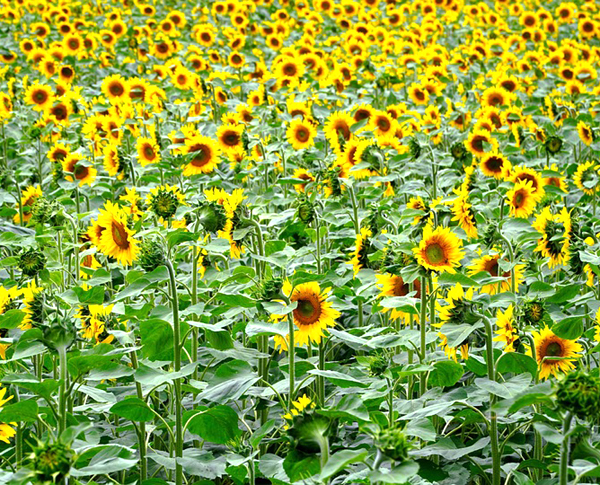
So, try to take good care of the plants. Here we are shortly describing about the caring process for sunflower farming.
Fertilizing
Use adequate amount of organic fertilizers while preparing the soil. Apply 4-5 ton of well decomposed cow dung per acre in soil, 2-3 weeks before sowing.
Overall apply N:P@ 24:12 kg/acre in form of Urea@50kg, SSP@75kg in soil. For accurate dose of fertilizer do soil testing and apply doses on basis of it. Apply half dose of nitrogen and full dose of P at time of sowing. Apply rest of nitrogen 30days after sowing. In case of irrigated crop, apply remaining half dose of Nitrogen in two equal splits, first 30days after sowing while remaining after 15 days.
Watering
Irrigation is required depending upon soil type and weather conditions. Generally 9-10 irrigation are required for sunflower cultivation.
Apply first irrigation one month after sowing. When crop is at 50% flowering, soft and hard dough stage is critical for irrigation. Water stress during this stage leads to severe yield loss.
Avoid excessive or two frequent irrigation as it increases chances of wilt and root rot attacked.
In case of heavy soil, apply irrigation at 20 to 25 days interval, and 8-10 days in case of light soil.
Mulching
Mulching is beneficial for controlling weeds and also for retaining moisture in the soil. You can use organic materials such as dry grass or leaves as mulch.
Controlling Weeds
Keeping the field weed free is very important. Weeds generally consume nutrients from the soil and your plants suffer. So, try to control the weeds.
Keep the field weed free during the first 45 days of crop period and irrigate the crop at critical stages.
Complete first weeding, 2 to 3 weeks after sowing followed by second weeding operation three weeks afterwards.

If you want to control weeds chemically, spray the weeds with Pendimethalin at the rate of 1 liter in 150 to 200 liter of water.
Bird Damage Management
Bird damage is a serious problem in sunflower farming business. The crop is damaged by birds during the period from seed filling to harvesting.
Bird scaring like trying to bright reflector ribbons above the crop should be used, particularly in the morning and evening hours.
Step 11: Prevent Pests and Diseases
The sunflower plants are susceptible to some pests and diseases. You can apply both organic and chemical methods for controlling diseases and pests.
Pests
Tobacco caterpillar, head borer or American bollworm, Bihar hairy caterpillar, jassid etc. are some common pests for the sunflower plants. Contact with an expert in your area for better suggestion about controlling all these pests.
Diseases
The sunflower plants are also susceptible some diseases. Common diseases of the sunflower plants are rust, charcoal rot, stem rot, alternaria blight and head rot are some common diseases of the sunflower plants. Contact with an expert for controlling all these diseases.
Step 12: Harvesting
Complete harvesting of crop while all leaves are dry and back of head turns lemon yellow color. Don’t delay in harvesting as it leads to lodging of crop, also chances of termite attacked increases.
The sunflower seeds generally become ready for harvesting when moisture in the seed is 20 percent.
Phenotypically the heads are ripe when the back of the head turns yellowish-brown. All heads may not be ready for harvesting at one time.
So, harvesting may be done in 2 or 3 installments to avoid shattering. The harvested heads should be dried well in sun and then only threshes with available threshers by reducing their speed.

Then sun-dry the seeds before storing or making oil. It is very important, especially for making oil and storing for long time.
Post Harvesting Tasks
There are some tasks after harvesting the sunflower seeds. After separations of heads, dry them for 2 to 3 days. Proper drying leads to easy separation of seeds.
Threshing of heads can be done either manually by beating them with sticks or rubbing them or with power operated thresher. And after threshing, dry the seeds before storage. Bring the moisture content to 9-10 percent by drying.
Post-Harvesting Loses of Sunflower Seeds
Post-harvesting losses occur at different stages such as harvesting, threshing, winnowing, transportation, packaging, storage and processing. Follow the preventive measures for avoiding post-harvest losses.
- Harvest the seeds in proper time for reducing losses.
- Use proper method for harvesting the seeds. If possible, you can use modern mechanical methods for avoiding the losses in threshing and winnowing.
- Use improved techniques of processing. And if possible adopt the grading for getting a better price.
- Try to use good packaging materials for storage and transportation.
- Handle the seeds properly while loading and unloading. And avoid the use of hooks during handling.
- Use proper techniques for storing. The moisture content of the seeds should be 9 to 10 percent for storage.
- Use proper pest control measures during storage.
Storage of Seeds
Storing the seeds properly is very important for keeping the seeds for long time. After threshing, the seeds should be thoroughly dried before storing, otherwise it storage the seeds get damaged by fungus and decomposes.
Yield
Exact amount of yield can vary depending on numerous factors. So, it’s not possible to tell the exact amount. In proper care and management, you can expect yield over 2 tons per hectare.
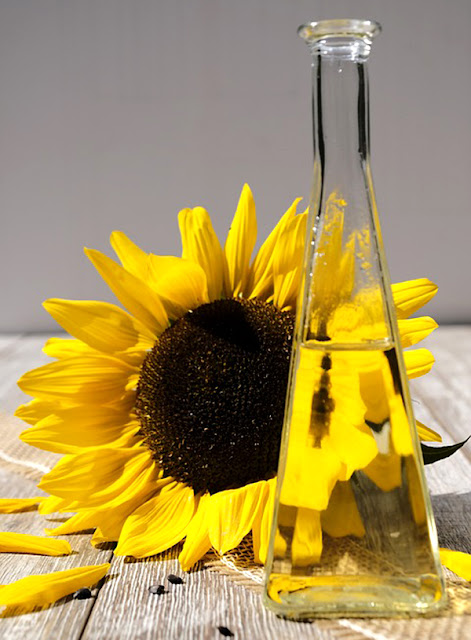
Step 13: Marketing
Marketing sunflower seeds is very easy. Sunflower seeds already have very good demand and value in the market. So, you will probably be able to easily sell the products in the local market. You can also target selling sunflower oil.
These are the steps and ways for starting and operating a profitable sunflower farming business. Hope this guide has helped you! Good luck!
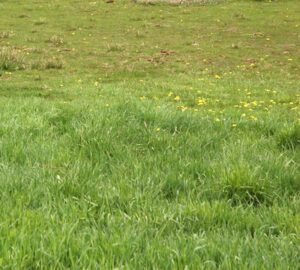
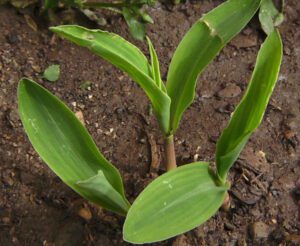
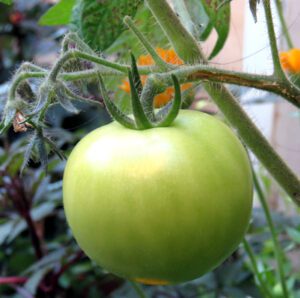

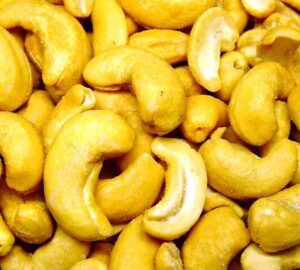
hello I really got a nice lesson about farming sunflower thank so much for the info you gave me..am looking forward to start farming
Best guide i have ever seen !
Is sunflower farming sustainable in the long term, considering the impact on soil health and biodiversity?
No, we don’t recommend growing sunflower every year. You should follow crop rotation and add as much organic fertilizers as you can. Good luck!